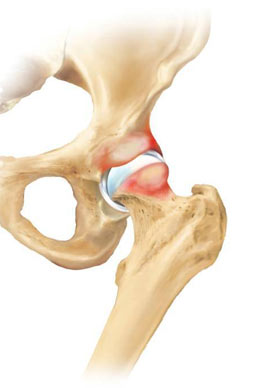treatment options

In the past, patients suffering from hip problems had limited options. In most cases, they were forced to live with the pain or decreased mobility until a total hip replacement was required. This is no longer the case. If you have hip pain and/or discomfort (or related groin pain, which can often be a sign of problems with the hip joint), you should make an appointment to see your doctor who may recommend one or more of the following treatment options:
non-surgical options
topphysiotherapy
An exercise program may be prescribed to strengthen the muscles in the hip joint and in many cases improve positioning of the hip and relieve pain.
anti-inflammatory medications
Non-steroidal anti-inflammatory drugs, or NSAIDs, may help treat inflammation and pain in the hip joint temporarily. Please note, however, that all medications have risks and should only be taken under the direction of your doctor.
corticosteroid treatment
Corticosteroids are a type of medication containing steroids, and are used to reduce inflammation and relieve pain. They can be taken orally or can be injected directly into the joint. Please note, however, that all medications have risks and should only be taken under the direction of your doctor.
surgical options
tophip arthroscopy
Hip arthroscopy [ahr-thros-kuh-pee] is an established form of keyhole surgery that is widely available and an important treatment option for those patients experiencing hip pain and/or discomfort (or related groin pain which can often be a sign of problems with the hip joint).
open hip surgery
The hip joint is one of the most ‘buried’ joints in the body, and simply getting access to the hip joint has been difficult until recently. Open surgery involves cutting through the surrounding muscles in order to locate and treat common hip problems.
hip replacement
In a hip replacement or resurfacing operation, the surgeon replaces the damaged surfaces of the joint with artificial parts – which may be made of metal, plastic or ceramic materials2.
Total hip replacement is not recommended in younger patients, as artificial joints tend to wear out and require replacement3.
about hip arthroscopy